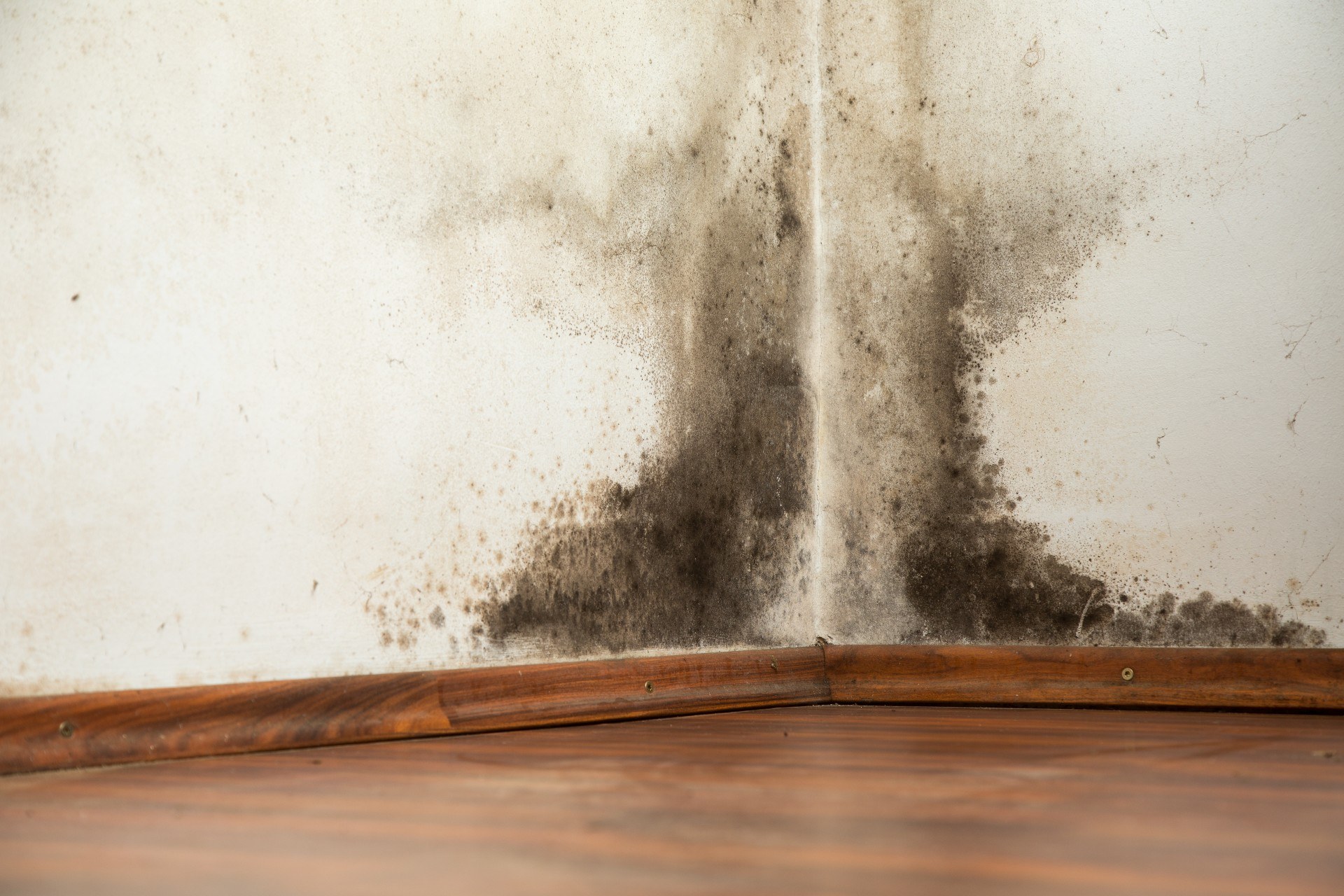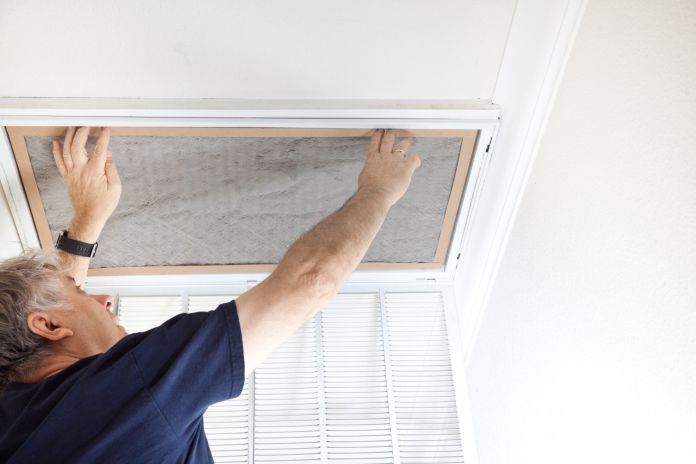Did you know mold is one of the most common household problems discovered during home inspections? Not many know how mold gets inside a property, how it colonizes both porous and non-porous surfaces, and how it affects the health of people indoors. In this article, we learn about the signs of black mold in air vents & how to remove black mold.
Introduction to Black Mold In The Air Vents
A type of fungus, mold is present nearly everywhere.
Mold spores are often present in the air and blow into the ductwork from the surrounding environment. Mold spores can also hitch a ride on your jacket or shoes. Also, mold spores inside your property can colonize in air vents, carpets, and other surfaces only if the conditions are right.

The average concentration of mold in an environment does not pose any serious health risk to people with a healthy immune system. However, some people are more sensitive to mold spores when immuno-compromised or have respiratory conditions. In this situation, mold exposure can worsen existing respiratory health problems, including asthma.
Several mold species, including black mold (scientific name – Stachybotrys chartarum), are toxic to everyone. That’s why it’s advisable to call in mold remediation specialists to safely and effectively get rid of mold.
Read more: 6 Common Plumbing Issues In An Older Home
Signs of Black Mold in Air Vents
As discussed above, exposure to mold spores can cause a variety of health symptoms.
If there is a black mold infestation in your air vents, ducts, or the entire HVAC system, you or some other family member may experience physical symptoms such as:
- Watery, red eyes
- A runny or stuffy nose
- A sore throat
- Fatigue or dizziness
- Skin rashes
- Coughing or wheezing
- Sinusitis
- Persistent headache
Such symptoms are likely to get worse when the air conditioning is on. Severe mold allergies can sometimes cause more severe symptoms, including shortness of breath.
You can also detect the presence of mold in your air vents by noticing their smell. Black mold gives off a strong, musty odor. The fragrance grows more robust when you approach the ducts infested with mold. You will also notice the smell more when you turn on the air conditioner.

Directly inspecting the air vents is undoubtedly the best way to confirm whether you have a mold problem. You can spot visible spores growing on or around air vents. You can find black mold patches on the duct’s material or on the wall, floor, or roof where it rests. If you see a dark-black patch that isn’t rust, paint, scratch, or something explainable, it’s likely to be a species of mold. It may or may not be black mold.
With the help of a flashlight, you can visibly see mold growing in air vents, insulation, air ducts, or drip pans. If you spot a mold colony, there’re probably some more underneath the air vent cover. Mold inspectors can confirm whether a substance found on air vents is mold or not only after a swab is taken and sent to the lab.
How to Remove Black Mold From Air Vents?
Removing black mold that has taken the form of colonies inside air vents can be a challenge. Most experts recommend that a DIYer uses one cup of bleach per gallon to wipe air vents clean. Others recommend using Ozone for air vent black mold removal. However, the Centers for Disease Control & Prevention (CDC) and other agencies have advised against this mold removal method to harm the respiratory system.
Four steps you can follow to get rid of black mold in air vents:
Before you begin the process of removing molds, do not forget to wear protective gear. While you don’t have to go out and buy a full industrial PPE suit, you still need gear that can protect you. You can use rigorously tested, top-grade nitrile gloves to safeguard your hands.
Molds can be dangerous when left alone and are even more so when you start cleaning them. They begin to be unsettled and spread to your hair, clothes, and possibly other rooms. During mold removal, disposable gloves are necessary since you can simply take them off and toss them in the bin afterward. That way, you can prevent the circulation of mold spores.
- Is it black mold? : Dark-black in color, black mold is readily identifiable to sharp-eyed observers and mold experts. Others can confuse it with various other molds that are dark-green or dark gray. If you are unsure, you can have a fungus specimen tested. Many mold remediation companies offer this service with a professional inspection.
- Identify the cause of mold: Mold doesn’t start growing in your air vents suddenly. Mold has likely been growing undetected in other moist or damp areas in your home. High indoor humidity, sweltering basement/baseboard/attic, wet walls, excess condensation, plumbing leaks, etc., are some factors that contribute to the growth of mold in residential buildings. You need to identify and treat the mold’s ain cause to ensure it does not return.
- Inspect the insulation: Put on a face mask and gloves. Use a flashlight to check if there is any mold on the ductwork’s insulation. You may need to replace the insulation if the decay has begun growing on it.
- Black mold removal: Use paper towels with a mixture of bleach & water to wipe clean the air vents. If you want to use a professional-grade cleaner, check whether it’s recognized by the National HVAC Inspection, Cleaning and Restoration Association (NADCA).
Safely dispose of paper towels and moldy materials in tightly-sealed and thick plastic bags. Incorrect removal of black mold can be a waste of both time and money. Airborne mold spores can spread into other home areas and colonize any moist surfaces where they land. Therefore, it’s important to properly seal the affected area before you begin removing the mold. Keep all windows and doors open for maximum ventilation.
Preventing Black Mold in Air Vents
The best way to prevent the growth of black mold in your air vents is to eliminate the possibility of moisture build-up. This is why mold remediation experts often advise homeowners to invest in dehumidifiers.

Investing in a whole house dehumidifier is a good idea, especially if you live in a humid climate or have an apartment or a single-family home that tends to be more humid. This device makes your property less hospitable to various allergens, including mold and dust mites.
Read more: When Should You Hire A Mold Removal Company In San Diego?
A Few Final Words
Most dehumidifiers available in the market run quietly in the background. Air vents in small living spaces with less ventilation, such as kitchens, bathrooms, and basements, can develop moisture even in a dry climate. Prevention is the best option, but if some mold colonies extend into your ducts, be sure to consult an experienced mold remediation professional in your area.
I hope this article about Signs of Black Mold in Air Vents helps you with some useful information! Thanks for visiting Green House Center, and I wish to see you again!



















